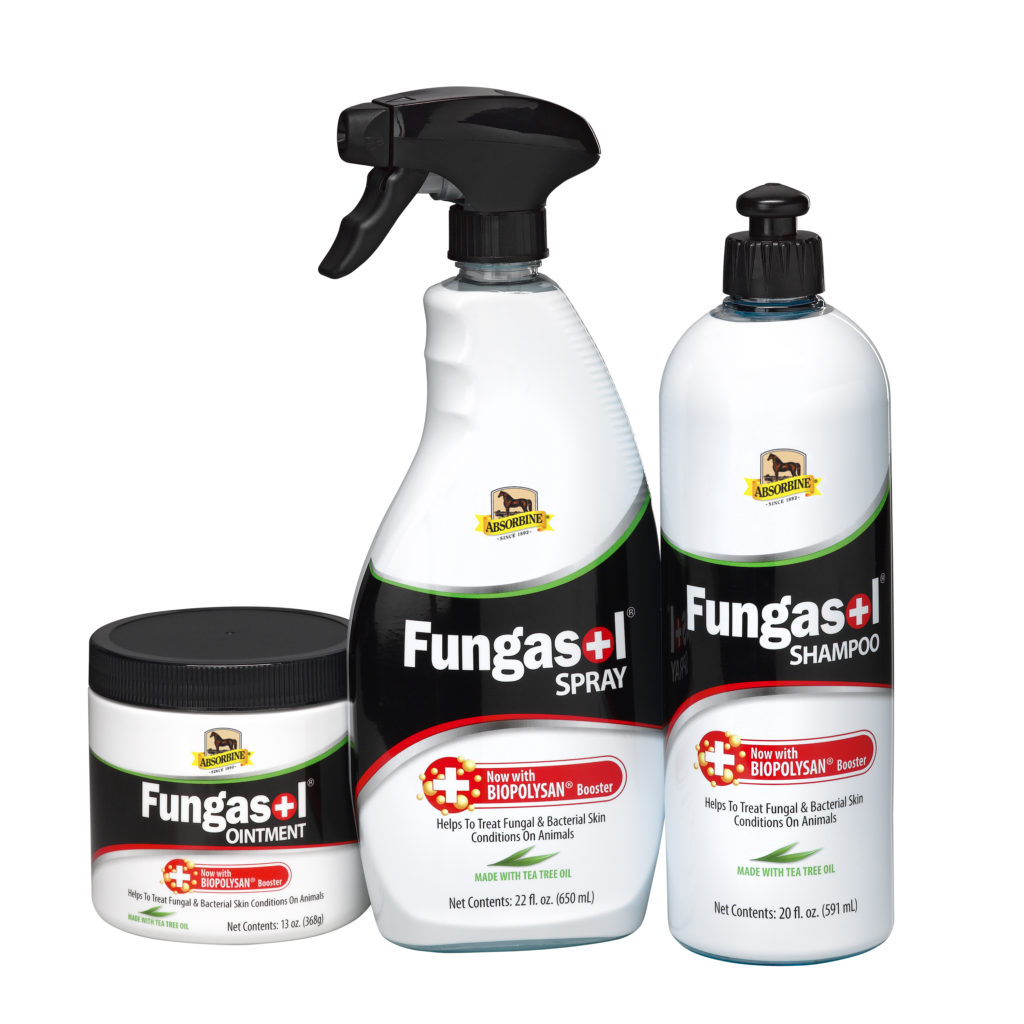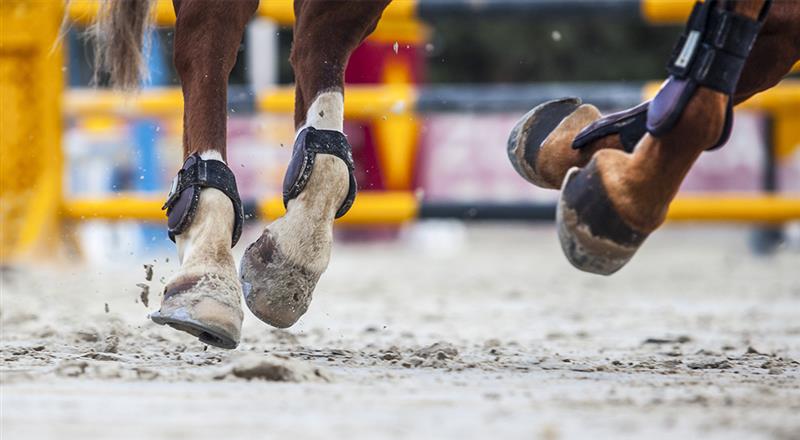When it gets wet and muddy outside, the chance that your horse will develop pastern dermatitis – commonly called scratches, but also known as greasy heel, swamp fever, dew poisoning, or mud rash – increases dramatically. At the least, pastern dermatitis is an unsightly condition, and at the worst, it can lead to serious health issues. So let’s talk about how to prevent and treat scratches.
Identify
Early symptoms of scratches include swollen skin and possibly some small scabby bumps. If allowed to progress, scabby crusts form on the back of the pastern, often in a line resembling a scratch or scratches. It is more common on the hind legs, though it occurs on the front legs as well. In general, light-colored skin is a little more susceptible than dark skin. The condition can be exacerbated by long “feathers” of hair around the fetlock and pastern which keep the area from drying. Left untreated, increased swelling further up the leg, infection and lameness are possible. So what can the concerned horse owner do?
Define
Scratches is caused by extended wet/dry cycles that strip away natural oils on the skin around the pastern and lower limb, especially the back of the pastern just above the hoof. This causes the skin to become chapped and raw, which opens the door for microbial infections caused by bacteria or fungi. A mite infestation can also be a cause. Imagine soaking your hands in water for many hours, then drying them out quickly, and repeating this cycle until they are raw and splitting, then adding a layer of dirt. Oh, and don’t forget to cover everything with a wet glove to simulate the damp hair on your horse’s leg. Not ideal!
Prevent
Of course, preventing scratches in the first place is the best answer. Here are a few tips:
- Consider clipping long hair around the lower legs – sometimes referred to as a “mud clip” – before the wet/mud season begins. For some breeds, you’ll want to keep those beautiful long feathers. If so, you can just lift up the top parts of feathers and trim the back of the pastern. This will help allow that skin to stay dryer while leaving the characteristic feathers intact.
- Keeping the footing dry inside the stall and turnout area will help tremendously; though understandably, this is not always possible 100% of the time.
- If the dampness is more likely from dew on the grass instead of mud, try turning your horse out a little later after the dew has dried.
- Picking out hooves twice a week at minimum is good practice if your horse is at risk for hoof infection caused by wet conditions. Take note of the condition of the pastern skin at this time. Is the whole area matted and wet? Is the skin puffy? Do you feel any bumps or scabs? Early detection is the best medicine – before this turns into a full-blown case of scratches.

Treat
However, if your horse does get a case of scratches there is still hope! Follow these steps to deal with a case of scratches:
- Clip away the long hair around the affected area.
- Gently wash with a shampoo the helps treat fungal and bacterial skin conditions such as Absorbine® Fungasol® Shampoo. As you wash, try to gently remove scabs, but be careful about pulling too hard on stubborn scabs as it could be painful, and you do not want to cause bleeding and new scabs.
- Dry the area with towels, or if your horse will allow it, use a hairdryer. Having the area completely dry is vital to the healing process.
- Apply an ointment that helps to treat fungal and bacterial skin conditions like Fungasol® Ointment to the affected area every other day, and continue gently removing the scabs. Alternately, use the convenient Fungasol® Spray as your continued treatment. Fungasol features the revolutionary Biopolysan® booster ingredient derived from coconut.
- If the affected area doesn’t start to respond to treatment, or if the horse has a severe case of scratches with leg swelling or lameness, contact your veterinarian immediately.
Important: Scratches can easily return if allowed to. It will likely take several weeks of persistent attention to fully treat. Don’t give up!
Shop Now
If you want to see the Absorbine products FarmVet offers, click here! For more information on how to treat other types of wounds, check out Absorbine’s Rapid Wound Repair here. Or you can shop ALL of our products at FarmVet.com 24/7 or call one of our friendly Sales Associates at 1-888-837-3626. You can also email your order to info@farmvet.com.
The blog was written by the Absorbine team to share information about the benefits of Funagsol.


Leave a Reply